
As a business, you already know how hard building a brand from scratch is, not to mention nurturing it over the long term. Now imagine your most precious assets – your employees – helped add credence to that by helping them with personal brand and promoting their expertise. After all, the employees of a company are its best representatives.
Sounds good? Now, think of yourself as one of them.
It’s funny how so many seasoned marketers know everything there is to know about business brands, but shy away when you ask them about their own. Too many of us are all pumped up about weaving brand stories, but lost for words when it comes to telling our own.
But think about it. In today’s paparazzi-inspired, social media-first world, you’ve already left several trails of footprints –some thankfully harmless, some crazy, some embarrassing (don’t worry, all of us have them!), some leading to dead ends, some downright appalling (what were we thinking?!) – all without even being aware of it. Yeah, those posts you put out there when you just wanted to speak your mind? Very, very telling.
So, professionally speaking, which image would you rather people had of you? An organically (perhaps even impulsively) generated, behind-the-scenes peek that you’re not actively controlling, or a well-strategized, intelligently managed one that communicates exactly what you want it to? Because, let’s face it – all the world’s now literally a stage, and you’re far less anonymous now than you were back when there was no internet. So smile! Coz you’re on social media.
If you’re still wondering why here are 22 statistics that prove the value of Personal Branding.
Tips to Develop your Personal Brand
Personal branding is all about establishing – and promoting – your views, knowledge, expertise, and beliefs. In other words, everything that you as a professional stand for. Your personal brand reflects what sets you apart from everyone else – you. It’s the impression you create on current as well as potential customers, colleagues, and employers based on your actions, on and offline. More often than not it requires great, on-topic and thought leadership content.
So, the first order of the day? Walk the talk. What you say and what you do just can’t be poles apart. If your words and actions indicate duplicity of thought or intent, you’ll not only get called out for inauthenticity, but you’ll also put people off. Bad idea, and not worth the desperate scramble back up. Luckily, there are loads of great resources and tools that can help with maintaining and nurturing consistent content. But armed or not, personal branding is by no means an easy task – just as is the case with business branding, it takes careful, measured planning and execution. And no, the measure isn’t about just numbers – at least not numbers such as followers, likes, comments, and subscribers.
Personal branding exists at the intersection of three valuable things you have to offer to people – your strengths, your intentions, and your values.
- Your values (the what)
- Your purpose (the why)
- Your strengths (the how)
This brings us to how you can go about building a personal brand:
Step 1: Figure out what you excel at. What do you think made the likes of Jeff Bezos, Steve Jobs, and Sir Richard Branson what they are/ were? They were all obsessed with very specific ideas – things that they relentlessly pursued (no matter how unlikely they looked at the time) till they were not only the best in their space but were for all practical reasons the only ones doing what they did in their space. Whether it’s customer focus, user experience, or entrepreneurship, each of these people has become synonymous with the niche they chose for themselves.
So, the first step? Acknowledge what you love – in fact, are obsessed with – doing, and commit to becoming the best you can possibly be at it. Because if you don’t like what you do, you won’t take it seriously. And if you don’t take it seriously, who will? Always think of what more you can do to offer more value – not how to get the better of competition. Make your own path. Be the first to do things other people haven’t thought of. If you’re a graphic designer, create visuals that leave people at a loss for words (we mean in a positive way!). If you’re a coder, simplify the user experience beyond anyone’s expectations – or imagination.
Step 2: Select a social platform that suits your offering. Are you a digital marketer? A seasoned product engineer who knows every hack in his trade? An HR professional who fosters workspaces that employees love getting back to every morning? There’s no place better than LinkedIn to start sharing your insights. Have secret tips or strong opinions that you want to share at scale? Tweet away.
Once you own your craft and start offering undeniable value to your audience on a public platform, you’ll see the magic unfurl. People will start associating you with your craft and will turn to you for great advice on anything related to it.
Step 3: Network and collaborate. The next step is to build and leverage relationships with other thought leaders in your space. There are several benefits to doing this – for instance, you learn about new perspectives that you may not have thought of before, while at the same time benefitting from the shared branding and augmented exposure.
You can even start creating shared content of collaborations and fun competitions (if you’re coders, for instance) for increased engagement, reach, and growth. Wins all around.
We had published an ebook on the same subject. In case you are interested, click here to get your copy.
How to Build your Personal Brand
As you can see, a lot of the process of creating personal brand centres around intelligently managing yourself on social platforms. But given the inherently different nature of these platforms, it’s a good idea to approach your branding in a way that leverages their unique strengths – while making sure that you maintain a consistent image across them.
Here are a few tips on how to approach personal branding on some of the major platforms.
This is the key channel for building your professional Personal Brand. Linkedin is a powerful channel not only to network and learn but also a place to let people know you for what you do at work. This is the single most important personal branding channel for business’.
- Complete your profile. Linkedin is a great place to showcase yourself, so use it to paint a complete picture – particularly of your experience and education. This will also help you reconnect with fellow alumni or old colleagues, who can be very supportive of your professional growth.
- Connect personally, stay professional. By all means, be yourself. Let people know you for who you are. It helps build a personal connection. But remember, LinkedIn is first and always a professional network. So, ensure that you keep that in mind in all your communication.
- Post engaging content regularly to stay visible. The more reactions you elicit through your posts, the more your reach – and visibility. When you post an update, it doesn’t automatically appear on all your contacts’ feeds. This means that unless you gain traction via engagement, your posts won’t get very far. Regularity, too, is critical. When you’re building a brand, whether it’s business or personal, it takes consistent effort to bear fruit.
- Reply to all comments. While this is not practical when your followers run into thousands, it’s definitely doable in the initial stages. If you’re garnering a good number of comments, it’s a good practice to reply to all of them. Of course, you should have a cut-off – let’s say about 80. Even a mere acknowledgment or “thank you” goes a long way in keeping people engaged. If there are negative comments (discounting trolls), try to find out where they’re coming from. Who knows, maybe you’ll discover a new perspective, while at the same time prolonging engagement.
- Be careful with external links. LinkedIn’s algorithms discriminate against external links and limit the reach of posts that have any of them. The best hack to get around this is to first post without the link and to add it back in after it has already been posted. (We didn’t tell you this.)
- Post pictures with people. There’s no denying it – as humans, we react more to faces than to objects. Want higher engagement? Post pictures with faces in them. In fact, consider investing in a professional photograph even in your own profile. It’ll speak volumes about your professionalism and self-confidence. (And follow that up with a kick-ass strategic headline for a major boost to your first impression.)
- Choose a sharp handle. Your handle is the first thing people will know about you. Make it count. Handles like @ThugLife or @LadyMarvel might sound funny or cute to you, but they won’t fly in the professional world – at least not where you’d like them to. Pick something that indicates what you stand for, sure, but something relevant to what you do, and also sounds professional. For instance, if you’re a car mechanic, you could go with @QuickFix. Another way to go is to simply use your own name. That could be the simplest way to boost your personal brand name recognition.
- Set appropriate images. Your profile on any platform is like your online business card. So, make sure you use images (both profile and header) accordingly. Also, your audience needs to see you, not your dog, or baby, or Van Gogh painting. And yes, the internet loves cats, but don’t even think about going there unless you’re maybe a standup comedian channeling Garfield for Monday specials.
- Define your brand. Keep a razor-sharp focus on what you stand for. This could be one, two, or maybe even three things you’re great at, but that’s the limit – at least initially. Cherry-pick your content instead of mowing down your audience with it, and you’ll soon amass a solid following of people who recognize you, and more importantly, love you for you.
- Keep it simple, sweetness. Even in the excessive world of social media, less can seriously be more. Don’t try to milk your branding worth out of every single post. Remember to aim for relevance above all else. If you don’t have something of value to say, don’t say anything. Never join a discussion just because everyone seems to be in it, or because it’s a trending topic. If you do participate in a conversation, make sure you can back up anything you say.
- Churn out great content. Stick to insightful, positive stuff that’s aimed to help people with something or the other, and don’t share anything that you don’t identify with. Also, as far as possible, tweet with images – they receive a lot more engagement than ones without. Finally, find a rhythm that you’re comfortable with. While Twitter’s mostly abuzz through the day, it doesn’t mean that you have to be at it all day too. But if you elicit positive engagement, keep it running as long as you reasonably can.
This platform is particularly useful if you want to use it as a showcase for your interests as a key combination with your professional profile on Linkedin. Remember, this could be a key channel for a 360-degree view of your personal brand. This is a digital portfolio of sorts. Whether you love photography, travelling, cooking, running… whatever your interest. This channel showcases your interests in the picture and video format. So use it accordingly.
- Remember to be yourself. Instagram has this way of getting into your head and forcing picture perfection. Don’t let that get to you. Just. Be. Yourself. There’s a reason why this is a social pressure. Everyone experiences it, and for the same reason, they can also smell a scam from a mile away. If you want to experience success, keep it real. For instance, if you’re a professional writer, by all means, upload a picture of your morning cup of java next to your laptop with a sunny caption. But you know what? If you put up a picture of what your writer’s block looks like, you’ll elicit more engagement than in the first case. Try it.
- Use your top keywords in your name field. While your username is best left simple, with either your own name or that of the brand you own/ work for, the name field is a different ballgame. Few people know that what you use in this field is actually searchable on Instagram. In other words, don’t repeat your username there – it’s an awful waste of a great opportunity. Instead, use targeted keywords, such as your professional niche, or the products/ services you sell. Another idea is to look at your bio and choose what you want to highlight most from it.
- Curate, schedule, and hashtag your content. Don’t be misled by the word “personal” in the branding – keep things clean and professional. In other words, if you don’t want your boss or client to see it, don’t post it. If you’re worried about past content, archive/ hide anything that you wouldn’t want surfacing in your professional circles. Also, leverage the Stories feature to showcase live events, such as expos, speeches, or workshops (all yours or your company’s, of course). Plan a schedule for all posts so that you can maintain consistent activity. And finally, don’t forget to hashtag your content. Brands get discovered by their hashtags. They are the trail of breadcrumbs that lead your audience to you. Most importantly, keep the efforts up, relevant, interesting, and engaging. Instagram, like any other social platform, takes time to show results. So, if you can’t keep up a rate of one post a day, start with one a week and then build up the pace once you’re more certain and comfortable. A good personal brand requires continued, consistent effort that goes far beyond just logging in and liking and sharing posts.
- Build out your network. Following other professionals, while an easy way to get noticed by the right people, is also a great way to initiate engagement and track others’ career progress. This applies to brands as well – if there are any brands that you admire, follow them. It helps you stay in the know about their updates and events as well. Most importantly, the larger your network, the more knowledge you stand to gain beyond what you’ve thus far been exposed to. However, it’s a good practice to regularly monitor/ audit your account and weed out any inappropriate connections. For instance, if you’re following any entity that’s controversial and makes you look bad by association, you might want to consider unfollowing them.
Facebook can swing for both business and personal brands. It’s important to decide what you want to do with your profile. If it’s personal. Keep that way and do it your way. However, if you want to make it swing towards your professional life or passion, you need to make it pro.
- Know your “friends”. One of the most useful features of Facebook is that it allows you to segment your audience. So, even if you already have a personal account, you can still create a new group or page and choose to add only professional connections there. But remember, your “friends” here need not really be your friends – so stay away from publishing personal updates like your recent fishing trip, the upcoming Prada sale, or your adorable Fluffy’s tummy upset.
- Freeze your goals. How do you want your peers to think of you? That should direct every action you take – what type of content you share, what opinions you publish, the role models you talk about. Every successive action should be aimed at bettering people’s perception of you.
- Feed your friends. Now, it’s time to dazzle. Make sure you have a steady pipeline of great original as well as curated content, all primed to trigger conversations. Better still, post content along with a comment to get the juices flowing. Using an app like Socxo is incredibly helpful that way since you can prep and schedule your content for automatically publishing, instead of having to do it manually.
- Keep it professional. Remember that you’ve created a professional profile. With Facebook, it’s easy to forget that because you’re engaging with “friends,” who also have difficulty remembering the same thing! A good idea would be to do anything on this profile during your work hours – that way, you’ll also keep things short and to the point.
Build a Powerful Personal Brand
Your personal brand is the perfect opportunity for you to shine, and to be recognized as the go-to person in your space. Granted, it takes time, effort, and perseverance to get it rolling, but it’s bound to pay off over time – in spades. So get cracking. If you do your branding well enough, who’s to say you won’t be the next internet celebrity in the near future?
To find out how to leverage this through an Advocacy Marketing Platform contact us.



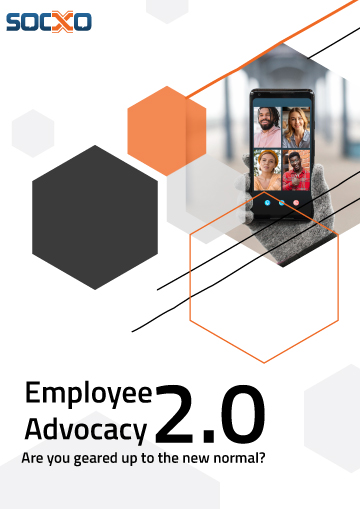




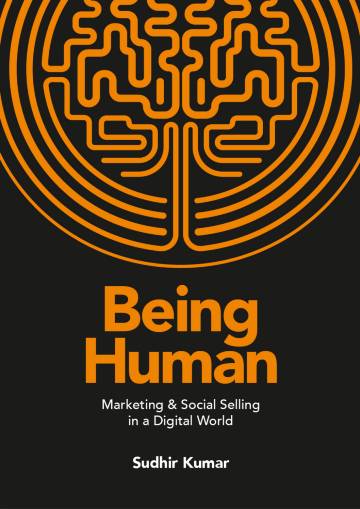
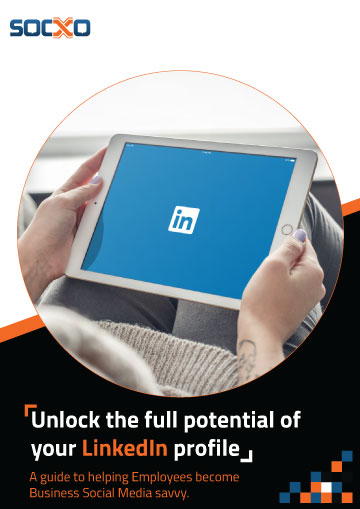


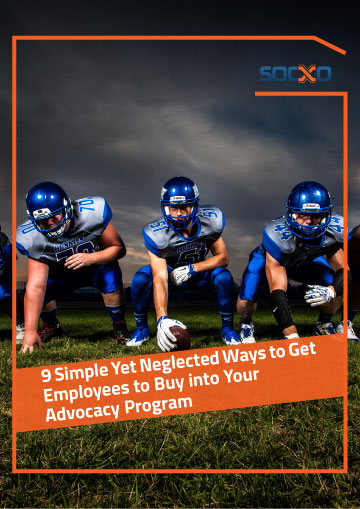
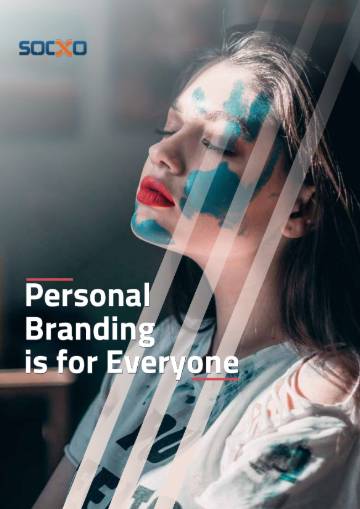



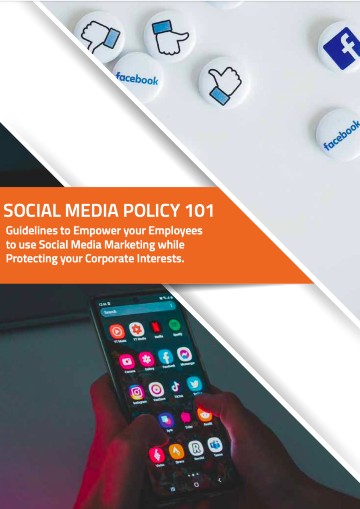
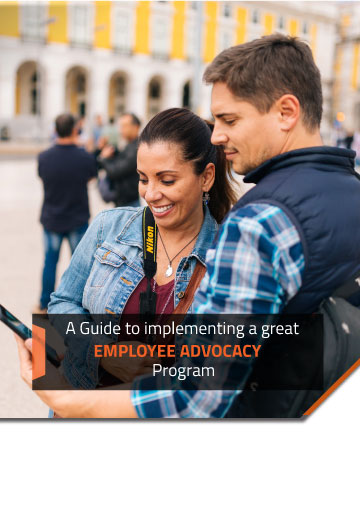
Blog Comments
Arlean Cafarella
April 16, 2020 at 6:28 am
Thanks for adding these points, these will be helpful.